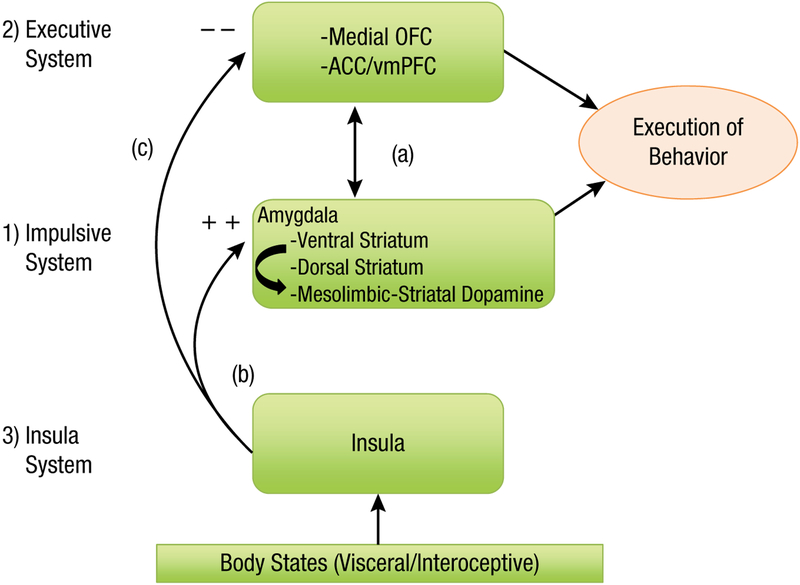Fig. 1.
A schematic neurocognitive model illustrating a proposed functional role for three key neural systems in addiction: The first two systems include the competing-neurobehavioral-decision-systems (CNDS) model, which consists of an impulsive system that includes the amygdala and its connections to the ventral and dorsal striatum, and their associated mesolimbic dopamine systems. This system mediates, at least in part, the motivational wanting and habitual/compulsive seeking of drug reward. The executive system includes the prefrontal in general (i.e., dorsal and medial sectors), but in particular, the regions more concerned with decision making and “willpower”: the medial orbitofrontal/ventromedial prefrontal cortex (OFC/vmPFC), and adjacent anterior cingulate cortex (ACC). This system forecasts the future consequences of a behavior such as seeking drugs, and normally exerts control over the impulsive system (a). The functional role of the insula system emerged more recently, and it seems to play a role in modulating the functions of the impulsive and executive systems in response to perturbances in the viscera and homeostasis. More specifically, internal factors associated with deprivation states (e.g., withdrawal or pain) or emotional states (e.g., anxiety and stress) are viewed as a “gate” that determines how effective the incentive input is in exciting the motivational circuits that “pull” and “steer” the person toward the appropriate goal object. This process depends on the insula. Interoceptive signals arising from the body, reflecting the status of the viscera and homeostasis, and mediated through the insula, will adjust the strengths of the conflicting signals, thereby increasing the influence of the impulsive system (b), and potentially overriding the inhibitory control of the executive system (c). An additional possibility is that insula signals may subvert the decision-making processes of the reflective system that supports planning actions to seek and procure drugs.

